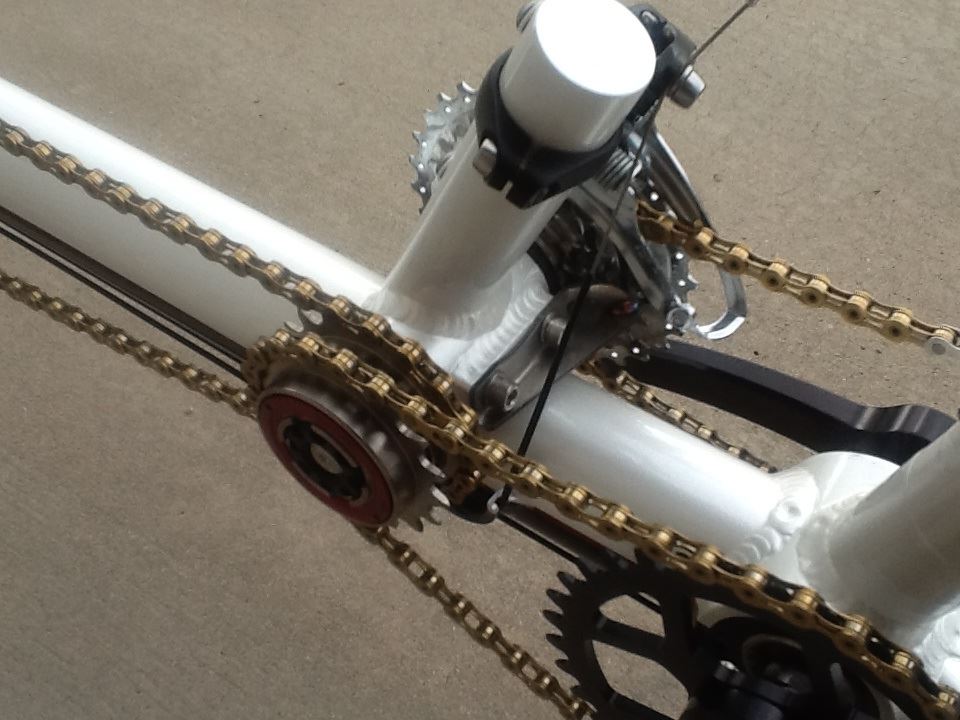The science is slightly different – I’ve seen an analysis proving that in sync is more efficient for a double kayak, the principle of which would presumably hold for a dragon boat.
The thing is on a bicycle, there isn’t actually any significant loss of efficiency due to the “dead spot” (there isn’t a significant variation in speed through the stroke unlike in a boat). Hence no real advantage to 90 degrees out of sync (notably racers have their cranks in sync). We have ours about 10 degrees out as it seems to help a bit with the feeling of having your feet dragged round for the weaker rider (not that the tandem has been ridden by any stoker other than my kids for 10 years, and I’m not sure they’re so bothered).
BTW the answer to “she’s not pedalling” is “she must be, because I’m not”


.jpg)
